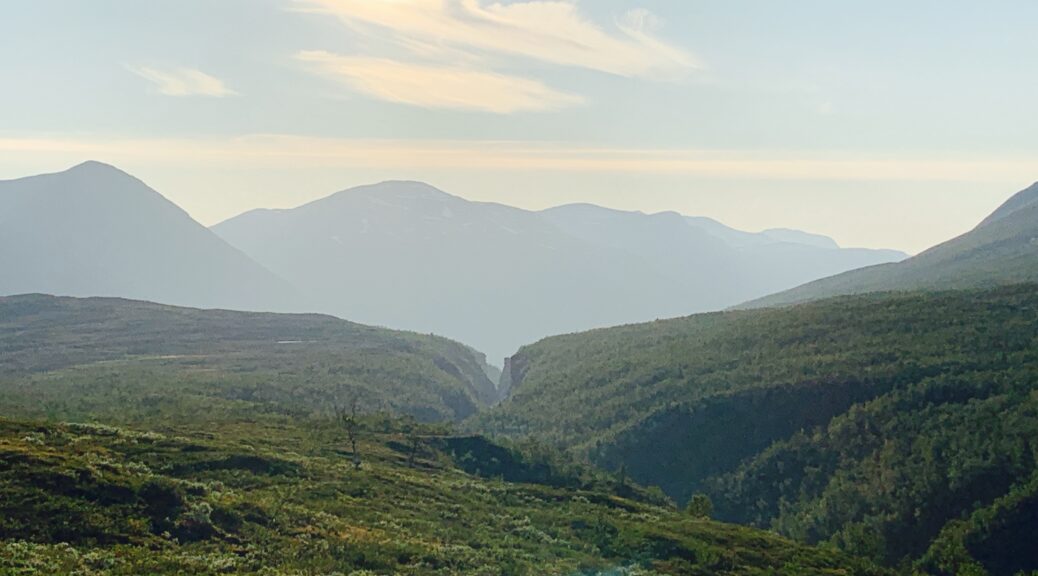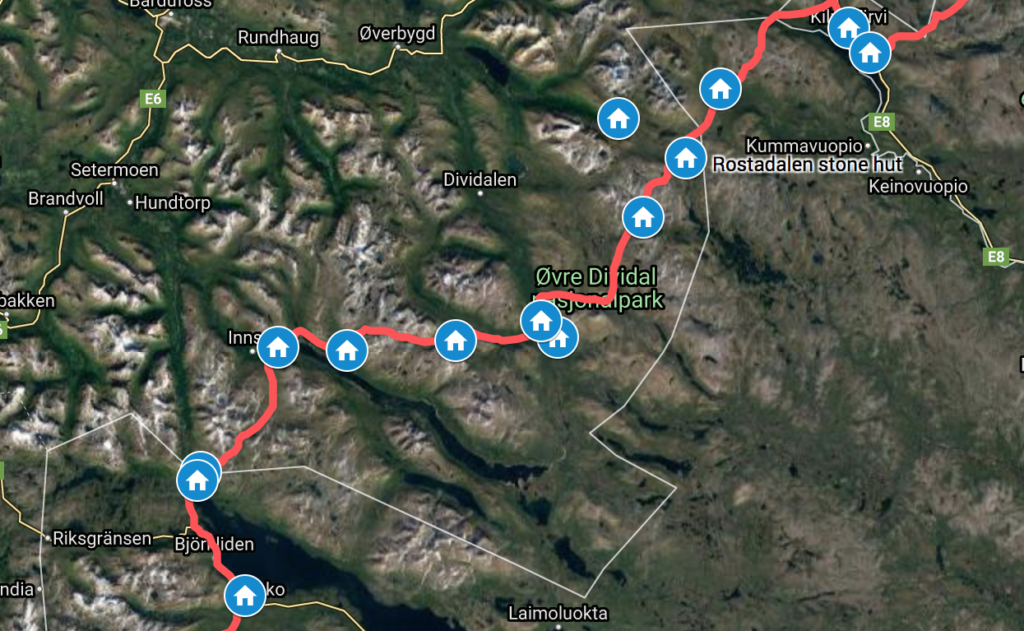The magnificent open wilderness, combined with relatively easy walking, well-marked trails and excellent cabins has made the 10-day hike from Kilpisjärvi to Abisko through Øvre Dividalen National Park, one of the more popular in Northern Norway. Popular, in this context, meaning I would meet 2-3 other people when passing the cabins, and perhaps see a couple of tents near the trail every day, not more than that.
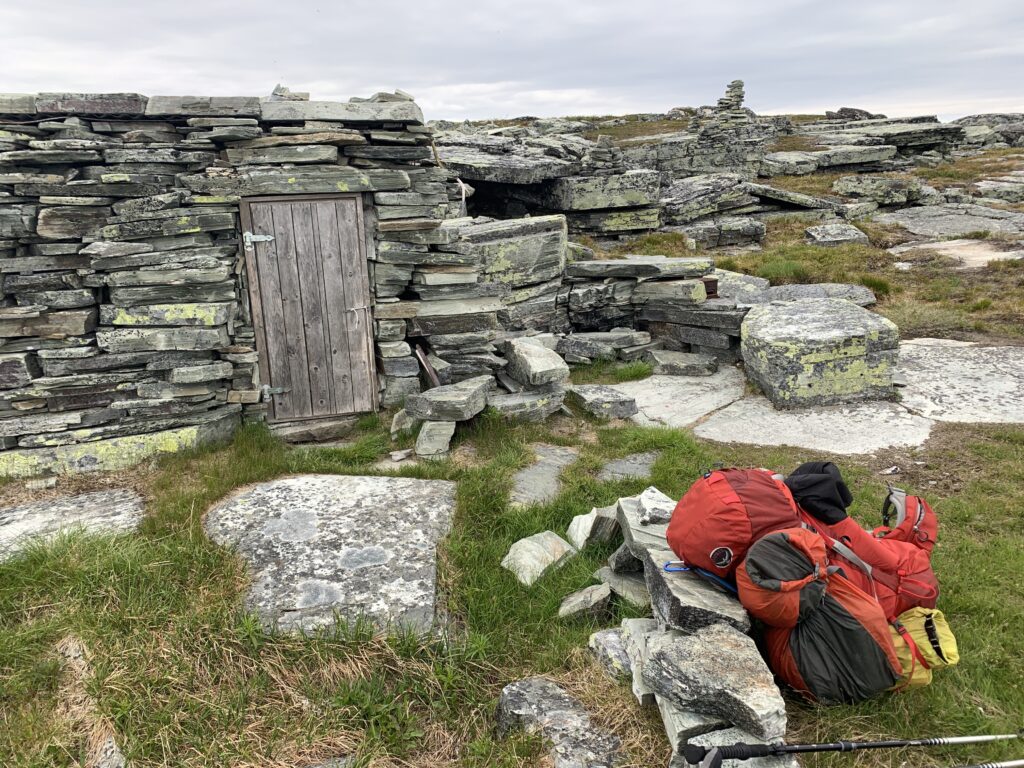
This is one of the few sections I have walked before, in 2018, though in the opposite direction. And for this reason, I decided to take an unmarked shortcut from Pältsa to Dærta crossing Rostaelva by the marked (ut.no) stone cabin, thus skipping the Rosta cabin. While saving me around 10 km I am not convinced I actually ended up saving much time as the terrain is rough with plenty of boulders and 5-10 m crevices, not visible on the map. Furthermore, the crossing of Rostaelva by the stone cabin (further down there is a bridge) was the biggest river crossing so far. Crossing a snowfield by a lake high up in the midddle of the short-cut I wondered if I was the only person having ever walked in this exact area. Until I saw a tent and two men from far on the other side of the lake.
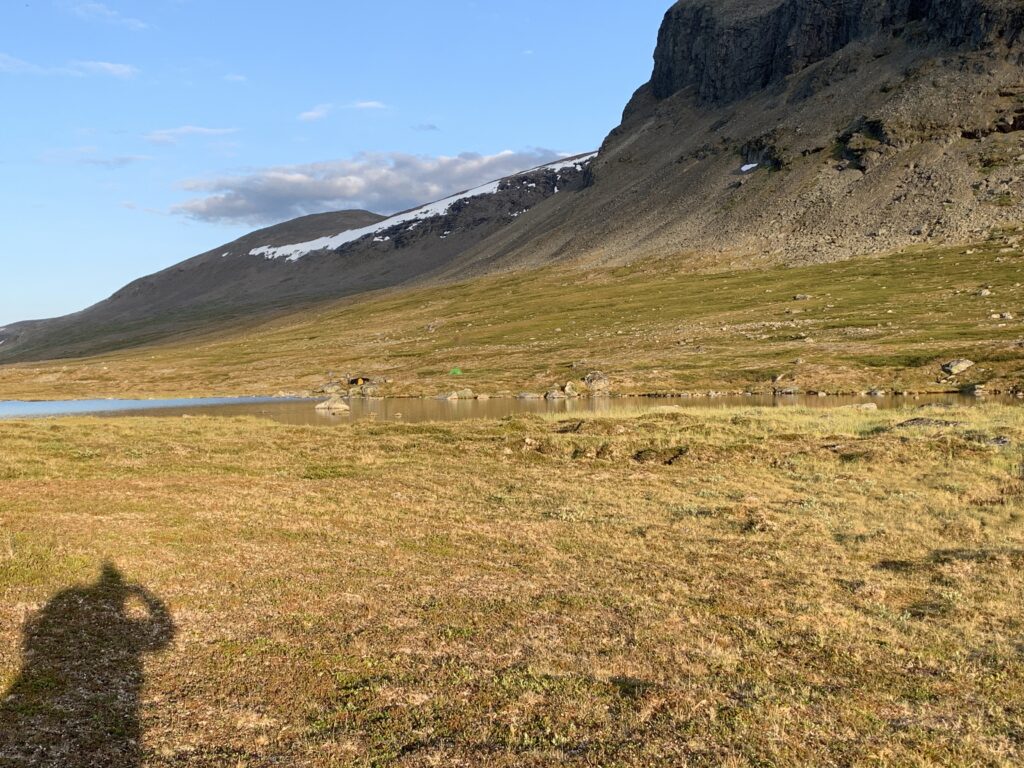
Upon reaching the Dærta cabin I met a Swedish guy attempting to set a speed record on the Swedish long-distance trail “Gröna Bandet”. He had started out the same morning from Treriksröset (border between Norway, Sweden and Finland close to Kilpisjärvi) having thus walked around 40 km. His plan was to walk 60 km the following day, but he was negatively surprised by the stony terrain, which prevented him from running as fast as he would have liked to. I later looked him up on Instagram and found out he quit his record attempt with a muscle injury in Abisko.
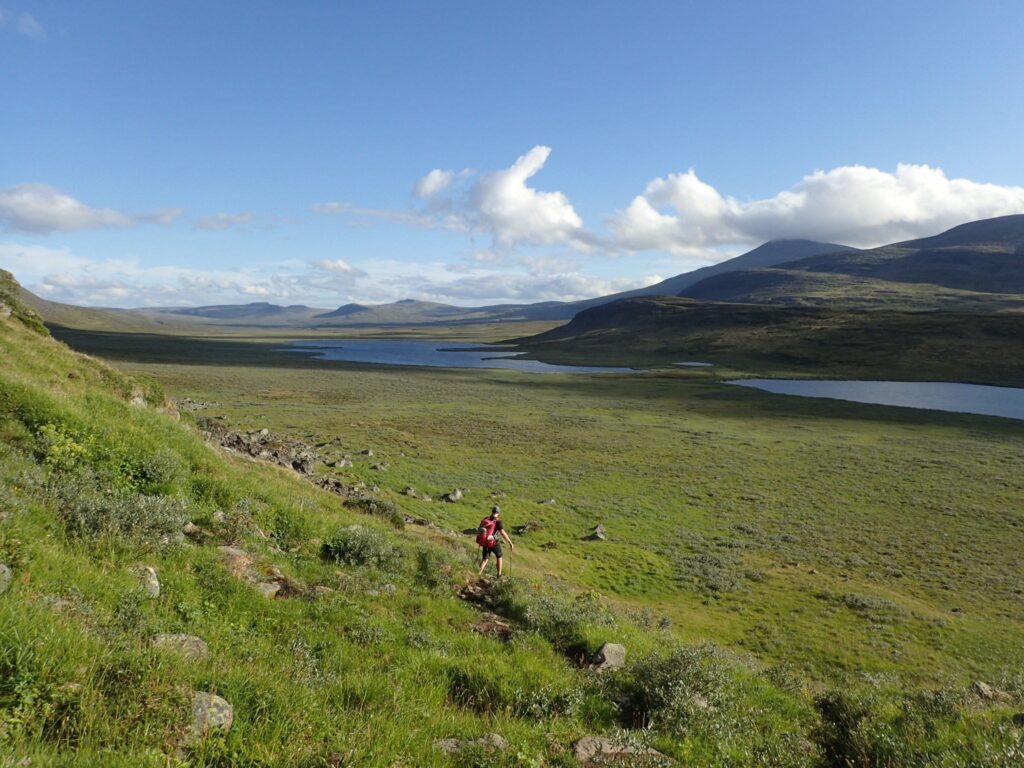
Though not the area with the most bears in Norway (that would be Pasvik), Dividalen is nevertheless well-known for hosting bears. They live predominantly in the side valleys, such as Anjavassdalen, where bears are spotted every year, mainly on the northern bank of the river, opposite of the tourist trail. I reasoned that by walking down an unmarked trail in another side valley, Skaktardalen, around midnight I would maximize my chances of meeting a bear, but in vain. June-August is normally considered the safest period to see bears, as they have finished their initial post-winter eating rush. Skaktardalen, at least the upper part, is perhaps, in hindsight, probably too open to provide an optimal environment for the bears, who prefer more vegetation. However, walking down Skaktardalen in the midnight sun on an unmarked path to reach the historic, open Ole Nergård cabin down by the main river was one of the highlights of the entire trip.
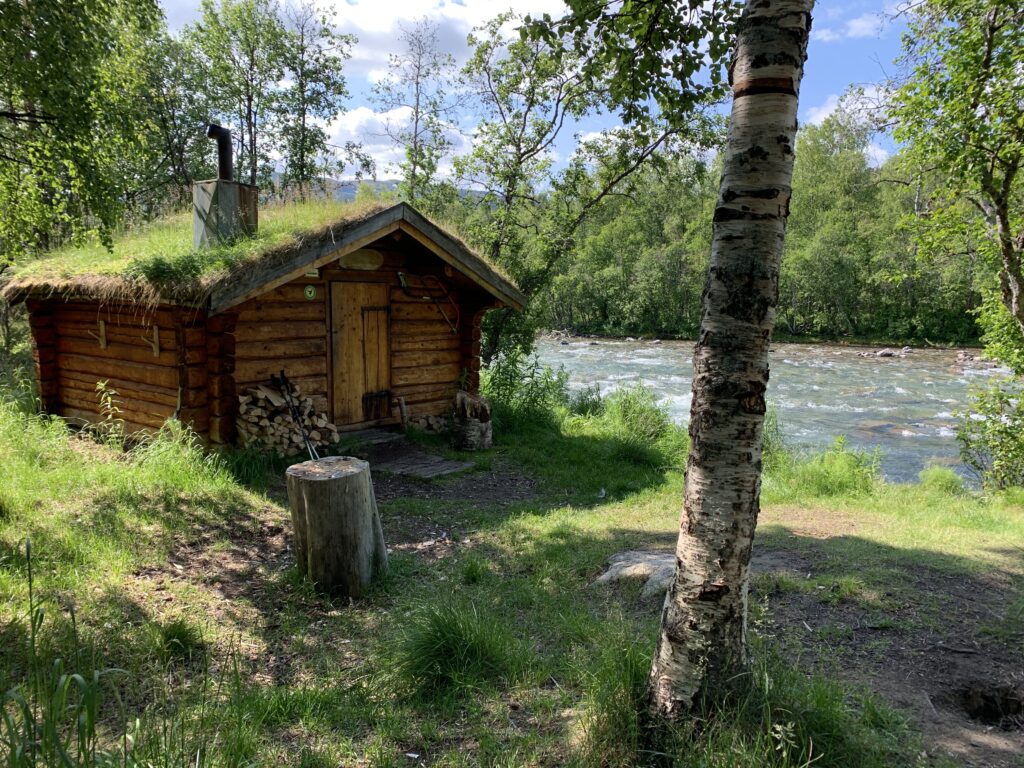
The Vuoma cabin next to the lake stands out as it is on of an increasing number of DNT cabins built in semi-modern architectural style, with a huge window overlooking the lake. The Vuomavatnet, famous for ice-fishing in winter, is where I tried to fish for the first time ever, back in 2018. Unsuccessful, and after my fishing hook twice got stuck in the stones I gave up. According to senorge.no there would still be some snow over the highest passes close to Vuoma, but it turned out to be almost gone, leaving patches with hard, dry summersnow.
Future dream trip #3: Dividalen-Havgahytta-Irgassjavri-Vuomavatnet and this area. With packraft.
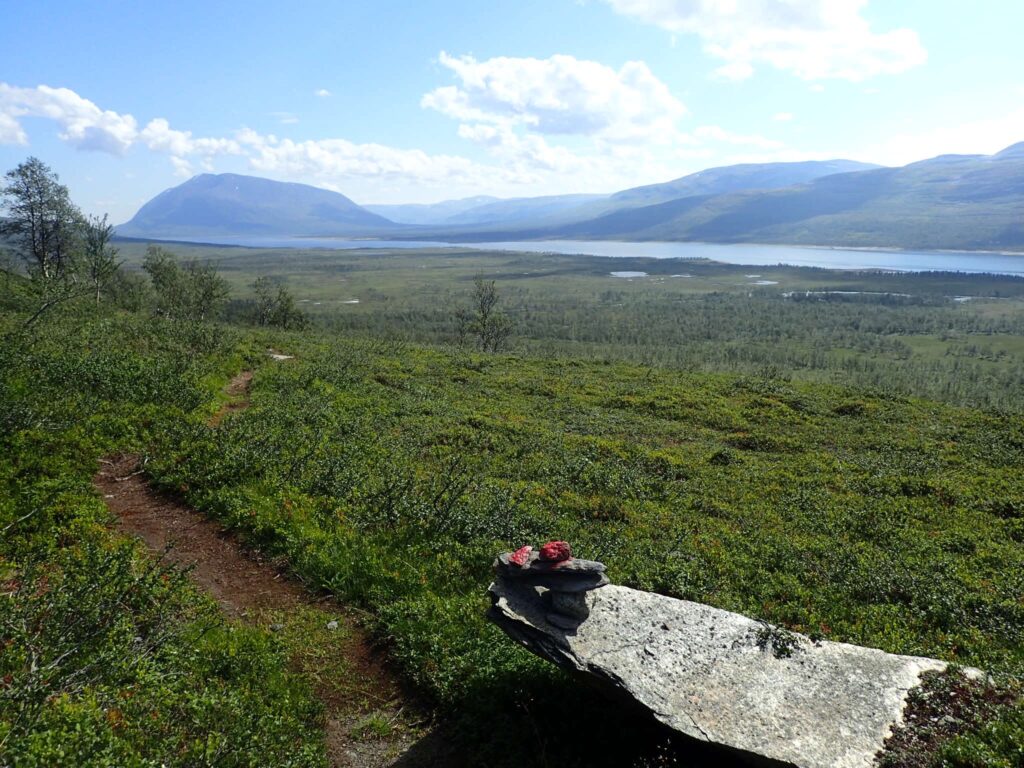
Altevatn was the location for the first couple of seasons of the Danish reality TV show ”Alene i vildmarken” (Alone in the Wilderness). Altevatn, however, is far from a wilderness, especially near the western with multiple huts and ATV tracks all over the place. I wonder where the TV show was filmed. Probably around the eastern end, close to Politiodden. But with 10 km between the participants campsite, they must have used a considerable part of the lake.
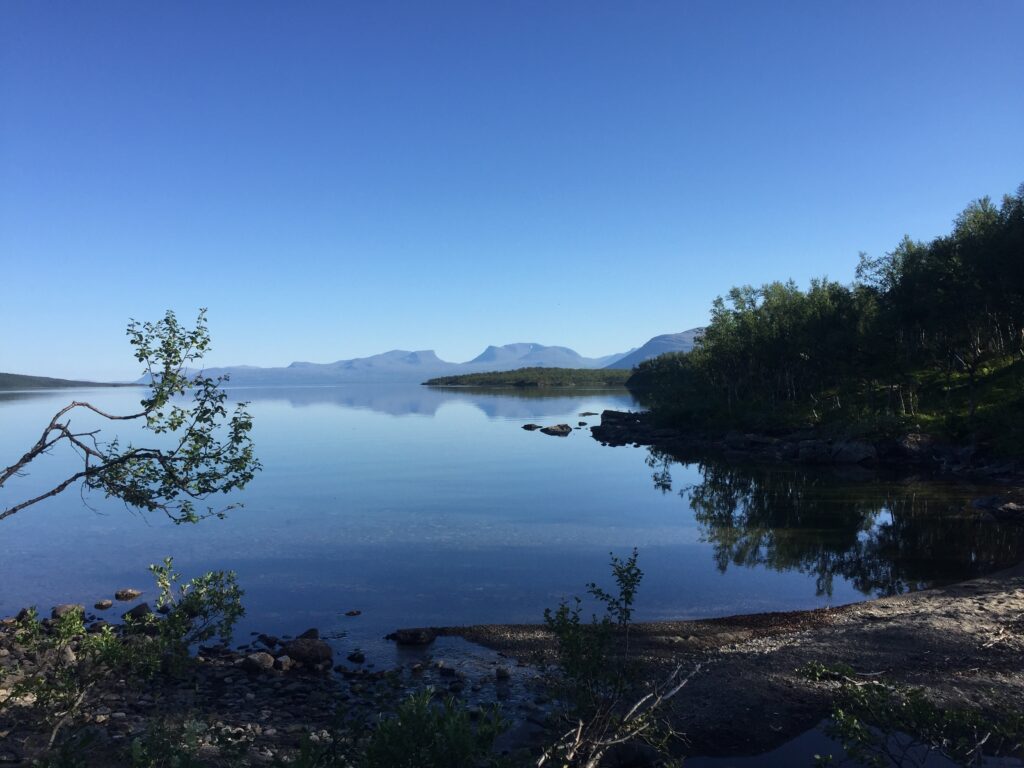
From Altevatn it is a two days walk over the mountains and down to Torneträsk and Abisko.

